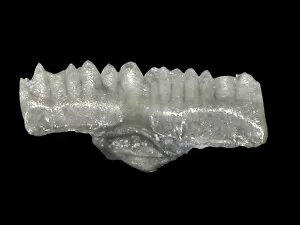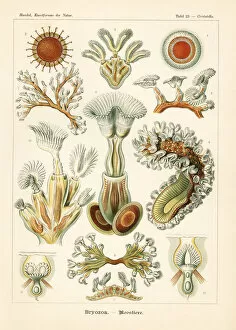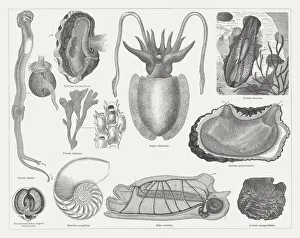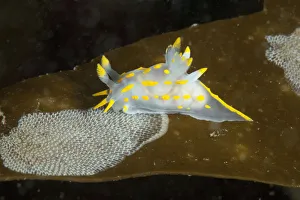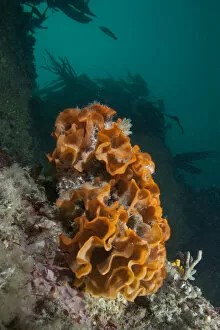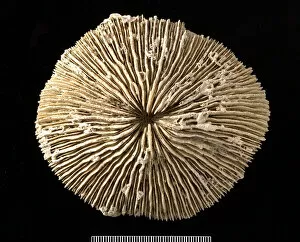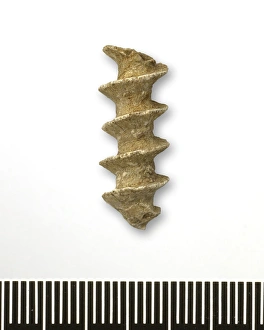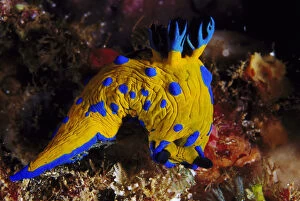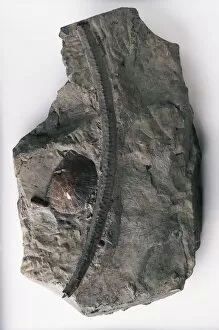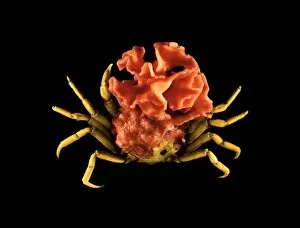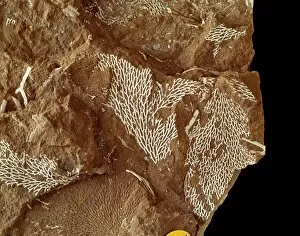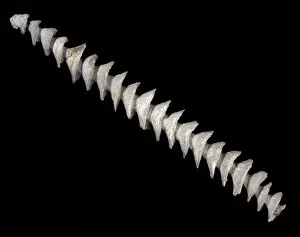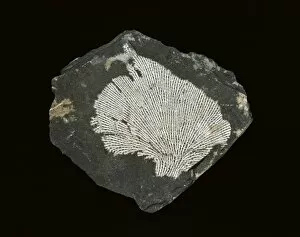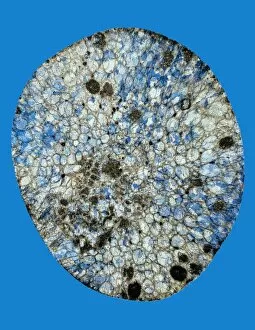Bryozoa Collection
"Bryozoa: A Fascinating World of Moss Animals and Sea Mat Feasts" Dive into the mesmerizing world of Bryozoa
All Professionally Made to Order for Quick Shipping
"Bryozoa: A Fascinating World of Moss Animals and Sea Mat Feasts" Dive into the mesmerizing world of Bryozoa, a diverse group of aquatic invertebrates that inhabit our oceans. From ancient species like Ozarkodina remscheiddensis eosteinhornensis to vibrant nudibranchs such as the White and yellow Polycera quadrilineata, these creatures never cease to amaze. Witness the delicate dance between nature's predators and prey as you observe a White and yellow nudibranch gracefully feeding on a sea mat, known scientifically as Porella compressa (Millepora compressa). This captivating scene comes alive through James Sowerby's handcoloured copperplate engraving from The British Miscellany. Bugulina avicularia is another remarkable member of the Bryozoa family. Its intricate structure resembles moss-like formations, earning it the name "Bryozoa moss animals. " These tiny organisms create stunning colonies that thrive in various marine habitats. Venturing deeper into the ocean depths reveals an enchanting collaboration between proliferating anemones (Epiactis prolifera) and Kelp lace bryozoans. Their symbiotic relationship showcases nature's ability to find harmony even in seemingly harsh environments. The wonders continue with wood engravings dating back to 1877, showcasing Mollusca species intertwined with Bryozoa colonies. These illustrations serve as timeless reminders of biodiversity throughout history. One cannot overlook the Nudibranch (Polycera quadrilineata) indulging in its favorite meal – a bryozoan Sea mat called Membranipora membranacea. Witness this delicate feast unfold before your eyes, highlighting nature's interconnectedness within ecosystems. Traveling across seas brings us to L Etac in Sark, British Channel Islands where Ross Bryozoan (Pentapora fascialis) thrives.

